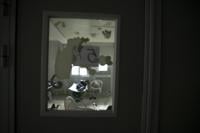TORONTO - A group of Ontario children's hospitals and health organizations have asked the province for $371 million in the upcoming budget to fix pediatric care, saying the funds are desperately needed to tackle surgical, clinical and diagnostic wait-lists.
The request comes just days after Ottawa laid out its offer to provinces and territories on federal funding of health care.
That deal – which the country's premiers have agreed to accept – has a one-time cash boost of $2 billion for provinces and territories to use as they see fit, although Ottawa has prioritized pediatric hospitals that need help after respiratory viruses overwhelmed them in the fall. Bilateral negotiations are now underway.
Ontario's children's hospitals say they welcome the federal deal but need long-term funding to address a massive wait-list for a variety of procedures.
"Every day matters in the life of a child," said Alex Munter, CEO of CHEO, a pediatric hospital and research facility in Ottawa.
"It's just not OK for children's health and development, nor for their families, to wait months and years for medically necessary care."
The Children's Health Coalition, a collective of pediatric health organizations that include Ontario's four major kids' hospitals, are asking Ontario Finance Minister Peter Bethlenfalvy for $371.5 million for the upcoming year.
"We're certainly talking about numbers that would make a huge difference to helping organizations like CHEO clear the backlogs of kids that are just waiting unacceptably long," Munter said.
A spokeswoman in Bethlenfalvy's office said it will consider all submissions as it looks to set the budget for the coming year.
The state of children's health care in Ontario is dire, the heads of the pediatric hospitals say.
There are about 12,000 children across the province who make up the growing surgical backlog. But there are also lengthy wait-lists for all kinds of other procedures and appointments.
At CHEO, for example, there are 37,000 children and youth waiting for clinical appointments – more than 60 per cent are waiting longer than is clinically safe.
The hospital receives about 45,000 referrals a year, but only has the capacity to handle 35,000 referrals annually, a problem that predates the pandemic.
Across the province, there are more than 90,000 children waiting for community- and school-based development and rehabilitation care, more than 31,000 on diagnostic imaging wait-lists and some 28,000 children waiting for community-based mental health treatment.
The Children's Health Coalition has designed a plan – called Make Kids Count – to solve those problems. The coalition told Bethlenfalvy in a letter on Friday that "Ontario has outgrown its pediatric health-care system."
"You have the opportunity in your upcoming budget not only to add capacity to the system where it is needed now, but also to prevent a generation of children from experiencing significant long-term health problems because critical early intervention windows have been missed," the coalition wrote.
"You could invest now and save the province downstream costs by significant orders of magnitude."
Munter said his hospital has been running very lean for years.
About a decade ago, the hospital wanted to digitize its clinical files. So it took out a $26-million loan and deferred buying clinical equipment and capital projects to do so. It also created a program to simplify access to a complex mental health system in the region.
"Here's the punchline: we got it up and going because RBC gave us money," Munter said.
"We are 4,500 people here coming up with new, innovative ways to make sure kids get the care they need, we just need the resources."
Ronald Cohn, the CEO of Toronto's Hospital for Sick Children, said it is time to help children receive better care.
"Children's bodies and brains grow so quickly that some of these surgeries and procedures become either less effective or more complex the longer you wait," he said.
"There's a huge risk that children fall behind developmentally or physically, emotionally and socially."
Children are waiting twice as long for surgical procedures compared to similar ones for adults, Cohn said.
New money from the federal health deal will first go to addressing the surgical wait-list, Cohn said, which stands at 6,375 children needing a procedure at his hospital. SickKids said 67 per cent of those procedures are outside the recommended clinical waiting time.
Fresh funds will also be used to address its diagnostic imaging wait-list, which sits at 8,079 patients and another 1,015 waiting for image-guided therapy.
"We feel very encouraged by the federal government's recognition that pediatric health care needs an immediate investment," said Cohn. "But we also know a one-time injection is probably not the transformation that the pediatric health-care system really needs."
For Bruce Squires, the CEO of McMaster Children's Hospital in Hamilton, a big boost in funding organizations and programs outside hospitals is crucial to making the pediatric health-care system better for patients.
He wants to see much more, and permanent, funding for children's rehabilitation facilities, mental health services and primary care.
"Too often we make the mistake of targeting a single thing and that helps with that thing, but that really ignores the fact that it's all connected," Squires said.
He said the Make Kids Count plan will save money down the road by treating children much earlier than they are being seen now.
"This is something that a country like Canada and a province like Ontario can afford," he said.
One area where the Hamilton hospital needs help is for its child development and rehabilitation program that sees about 750 children a year. But they get 1,200 referrals a year, which adds to their 1,800-child wait-list.
"When you talk about child development, this is the service where early identification within the developmental window gives the greatest opportunity for addressing the issues for an effective treatment plan," Squires said.
"When you miss those key developmental windows, it becomes more difficult."
This report by Ďă¸ŰÁůşĎ˛ĘąŇĹĆ×ĘÁĎ was first published Feb. 14, 2023.








































